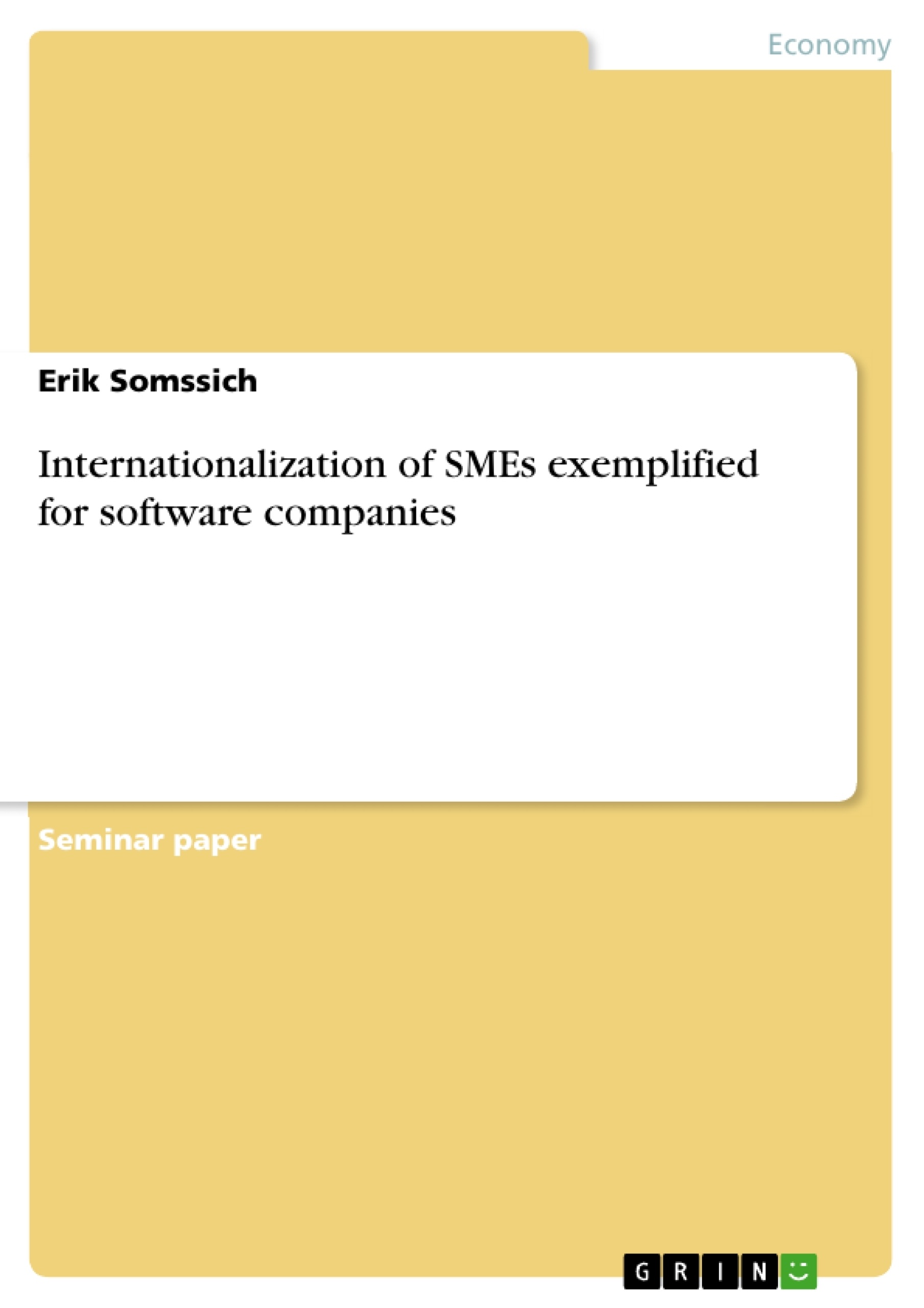The process of globalization has changed our world in a number of ways. From companies’ perspectives new production and sales markets have arisen beyond local borders and their numbers continue to grow. The motives and goals of internationalization of SME are, in general, very similar to those of bigger companies. The most important factors are additional market opportunities and thus a higher sales potential of products that are already established on the home market.
The internationalization of companies entails opportunities but also risks. Several key factors must be considered and specific requirements fulfilled. The prerequisites and also the demands of SMEs differ considerably from bigger companies. A company’s business success in a foreign market depends significantly on the capability of finding a suitable and attractive market for one’s own product and service offers. After identifying the target market, the form of market entrance needs to be chosen. The typical forms are the export, licensing/franchising, branch establishment, subsidiary establishment and the joint venture. Regarding the software industry, the internationalization strategy depends highly on the degree of standardization. On this case the need of international customization must also be taken into account.
This assignment is an introduction into the first steps and the specific challenges of SMEs in the course of internationalization. Short definitions of the terms of internationalization and SMEs, an overview of the companies’ motives and goals, and specific characteristics related to this topic are given. Subsequently, the different options and decision-making processes are presented and specifically exemplified for software providing companies.
Inhaltsverzeichnis (Table of Contents)
- Executive Summary
- Table of contents
- List of abbreviations
- List of figures
- Introduction
- Problem and objective
- Scope of work
- Fundamental terms
- Definition of SME
- Definition of Internationalization
- International management of SMEs
- Motives and goals of Internationalization
- Special characteristics of SME
- International strategy development
- Target market selection
- Form of market entrance
- Export
- Licensing / Franchising
- Branch establishment
- Subsidiary establishment
- Joint Venture
- Internationalization strategy of software companies
- Preliminary considerations
- Standard vs. Customized standard software
- Local standardization of products
- Resuling strategies
- Target market selection
- Form of market entrance
- Preliminary considerations
- Conclusion and Outlook
- References
- ITM - Integral Total Management
Zielsetzung und Themenschwerpunkte (Objectives and Key Themes)
This paper analyzes the internationalization strategies of small and medium-sized enterprises (SMEs), focusing on the software industry. The study aims to understand the key motives and challenges faced by SMEs in expanding their operations beyond national borders. It explores the different stages of internationalization, including target market selection and the various forms of market entry.
- Internationalization of SMEs
- Internationalization strategies for software companies
- Target market selection and market entry strategies
- Challenges and opportunities of internationalization for SMEs
- Customization and standardization of software products in international markets
Zusammenfassung der Kapitel (Chapter Summaries)
The paper begins by introducing the concept of internationalization and its relevance to SMEs, particularly within the software industry. It outlines the key motives and goals of internationalization for SMEs and delves into the specific challenges they face, highlighting the differences from larger companies. The paper further explores the process of international strategy development, detailing the steps involved in target market selection and analyzing the various forms of market entry, such as export, licensing, franchising, branch establishment, subsidiary establishment, and joint ventures.
The paper then focuses on the specific considerations for internationalizing software companies, emphasizing the importance of standardization and customization in adapting products to different markets. It analyzes the distinct challenges posed by standard software providers, customized standard software providers, and custom software providers. Finally, the paper draws conclusions regarding the most suitable strategies for internationalizing software companies based on the degree of standardization and the target market's characteristics.
Schlüsselwörter (Keywords)
The key focus areas of this study are internationalization, SMEs, software companies, target market selection, market entry strategies, standardization, customization, export, licensing, franchising, branch establishment, subsidiary establishment, joint ventures, and international business strategy.
- Quote paper
- Erik Somssich (Author), 2017, Internationalization of SMEs exemplified for software companies, Munich, GRIN Verlag, https://www.grin.com/document/437734




